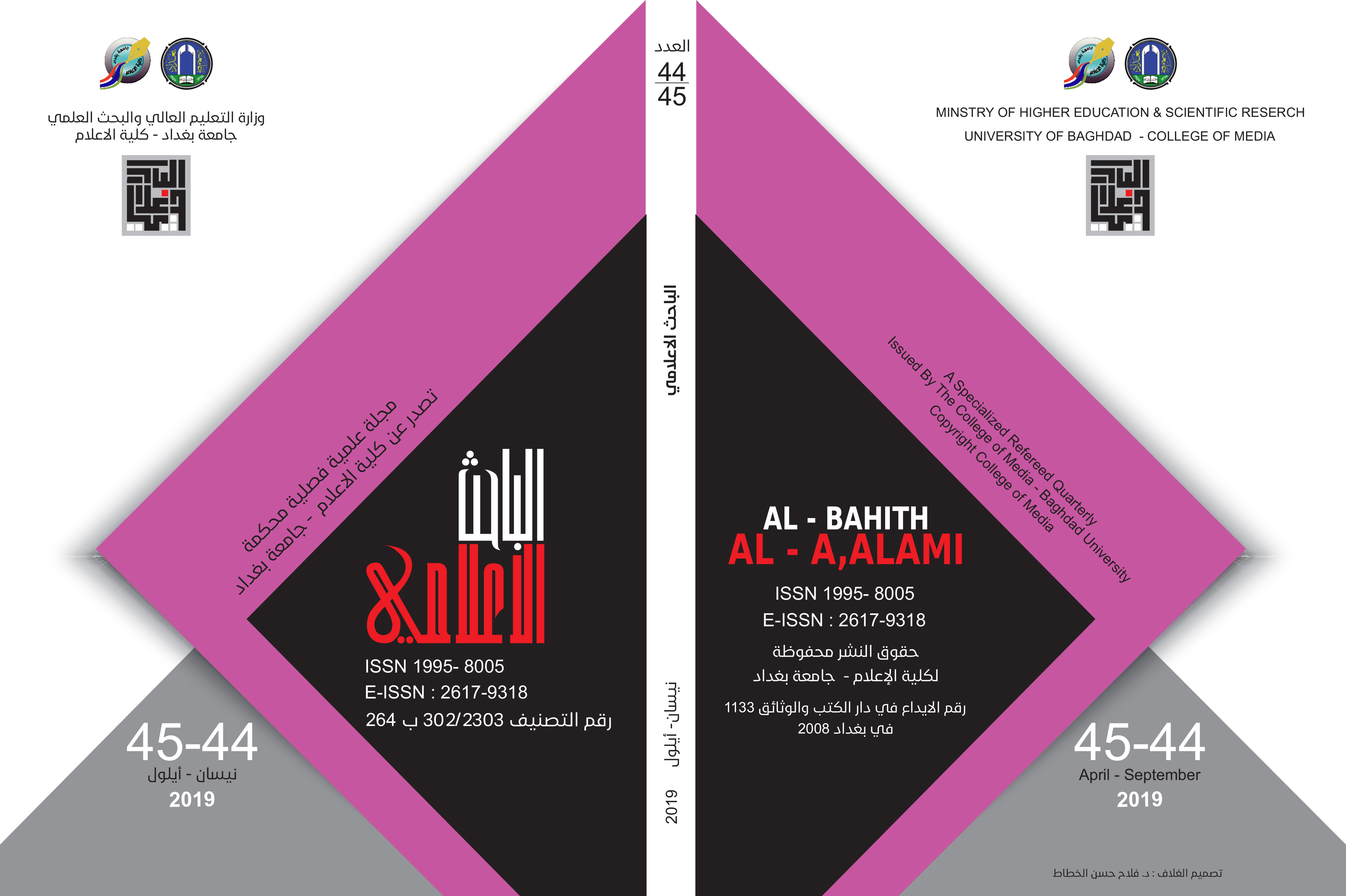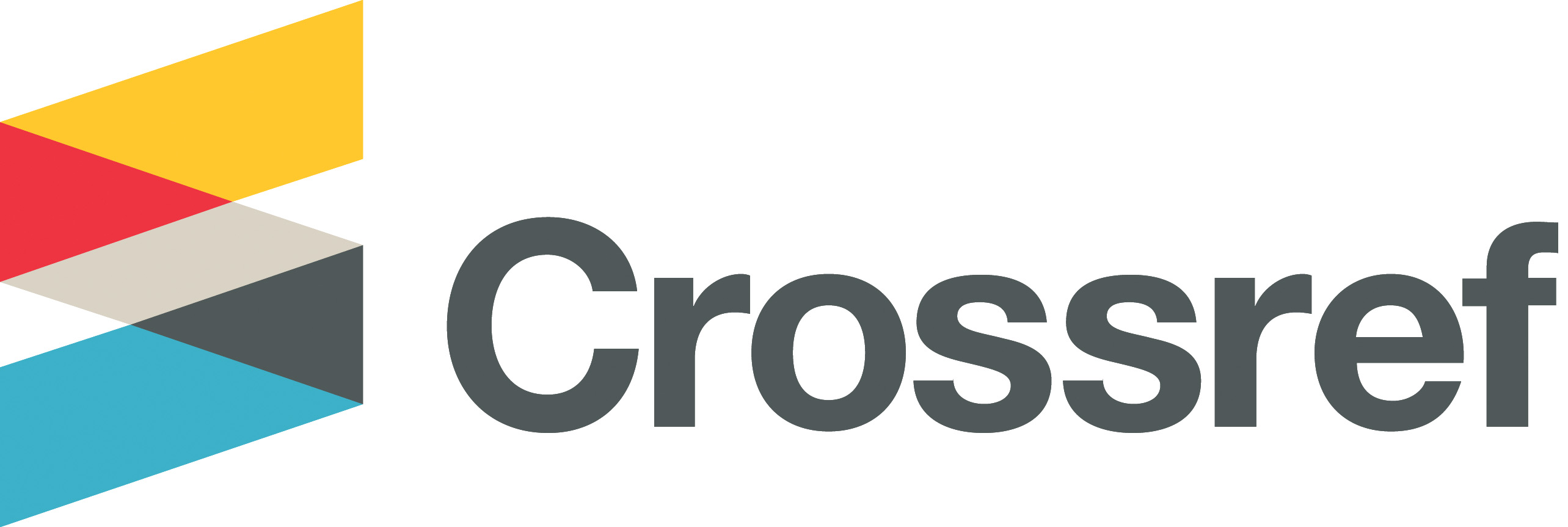New Recent Trends in Agenda Setting Studies n The Arab World
DOI:
https://doi.org/10.33282/abaa.v11i44.274Keywords:
Agenda-setting theory, Secondary analysis, Qualitative analysis, Quantitative analysis, Agenda-melding.Abstract
This study aims to examine the main features of the new trends in agenda studies using the secondary analytic approach in analyzing the newest studies in agenda-setting issues from 2007 till 2017, in addition to the quantitative approach.
The researcher has analyzed 110 studies -75 foreign and 35 Arabic - to determine, describe and evaluate the key research trends which came in Arabic and foreign agenda-setting studies. The results confirmed that studies of the agenda theory are increasing steadily worldwide with diversity in the theoretical trends and used research tools. In addition, primary studies focus on content analysis and the survey approach (method). Also, most Arabic agenda-setting studies used the traditional methods and known research tools such as content analysis and survey, contrary to the foreign studies conducted in the same field where they were characterized by the different research teams specializing in many scientific branches. The study recommends more cooperation among Arab researchers and the re-survey of the research map in fields of agenda studies. It also recommends giving more attention to comparative studies, revising the used methods and tools and focusing more on interdisciplinary studies through different timespans (periods).
Downloads
References
Bethany A. Conway, Kate Kenski, Di W.)2015. (The Rise of Twitter in the Political Campaign: Searching for Intermedia Agenda-Setting Effects in the Presidential Primary, journal of computer mediated society, Vol. 20, Issue 4 Julypp. 363–380.
Bruns, A. (2012). “Journalists and Twitter: how Australian news organisations adapt to a new medium”, Media International Australia incorporating Culture and Policy, 142, pp. 97-107.
Camaj, L. (2014). Need for Orientation, Selective Exposure, and Attribute Agenda-Setting Effects, Mass Communication & Society, Vol. 17 Issue 5, p689-712. 24.
Conway, B. A., Kenski, K., & Wang, D. (2015), The Rise of Twitter in the Political Campaign: Searching for Intermedia Agenda-Setting Effects in the Presidential Primary, Journal of Computer-Mediated Communication, 20(4), 363-380.
Cruikshank, S. A. (2016). The urban-rural divide: Building the news media agenda in post genocide Rwanda, African Journalism Studies, 37(2), 77–94.
Cruikshank, S. A. (2013). Peace under fire: Building media agenda in post-genocide Rwanda, (Unpublished doctoral dissertation). Ohio University, Athens, Ohio.
Denham, B. E. (2014). The intermedia attribute agenda setting in the New York Times: The case of animal abuse in U.S. horse racing, Journalism & Mass Communication Quarterly, 91(1). 19– 37.
Donald, Shaw. (2017). Communication is Community: How we agenda meld traditional and digital social media into humanitaized society, Conference paper, Digital Communication in the Age of Social Transformations conference, Ajman University, UAE, April 16-17, 2017.
Donald L. Shaw, Maxwell M., David H. W., &, Bradley J. (1999). Individuals, groups, and agenda melding: A theory of social dissonance, International Journal of Public Opinion Research, Volume 11, Issue 1, pp. 2–24
Eli Sogerb and Arne H. K. (2015). Newspapers, Facebook and Twitter, Intermedial agenda setting in local election campaigns, Journalism Practice, Volume 9, 2015 – Issue 3. Pages 350-366
Fei, J., & Kuo, H., (2013), Social Media: Dynamic Opinion Leaders and Flowing Agenda Setting. China Media Report Overseas, 9(2), 19-23.
Gabriel Weimann and Hans-Bernd B. (2017). Redirecting the Agenda-setting in the online Era, Agenda Setting Journal, 1:1, 63-101.
Golan, G. (2008). Inter-media agenda setting and global news coverage: Assessing the influence of the New York Times on three network television evening news programs, Journalism Studies, 7(2), 323–333.
Groshek, J., & Groshek, M. C. (2010). Agenda trending: Reciprocity and the predictive capacity of social networking sites in intermedia agenda setting across topics over time, Media and Communication, 1, 15–27.
Gruszczynski, Mike; Wagner, Michael W. (2017). Information Flow in the 21st Century: The Dynamics of Agenda-Uptake, Mass Communication & Society, Vol. 20 Issue 3, p378-402.
Guo, L. (2014). “Toward the third level of agenda-setting theory: A Network agenda setting model,” in T. J. Johnson (ed.) Agenda Setting in a 2.0 World: New Agendas in Communication (Kindle edition), New York: Routledge, Taylor and Francis.
Guo, L. (2012), The application of social network analysis in agenda setting research: Amethodological exploration. Journal of Broadcasting and Electronic Media, 56(4), 616–631.
Guo, L. & McCombs, M. (eds.) (2016). The power of information networks: New directions for agenda setting. New York: Routledge.
Guo, L., & McCombs, M. (2011). Network agenda setting: A third level of media effects. query Paper presented at the International Communication Association (ICA) Annual Conference, Boston.
Guo, L., & McCombs, M. (2011). Toward the third level of agenda setting theory: A network agenda setting model. Paper presented at the Association for Education in Journalism and Mass Communication Annual Conference, St. Louis, MO.
Harder, R., Sevenans, J. & Van A. (2017). Intermedia Agenda Setting in the Social Media Age: How Traditional Players Dominate the News Agenda in Election Times, International Journal of Press/Politics, Vol. 22 Issue 3, p275-293. 19p.
Kim, Y., Kim, Youngju, & Zhou, S., (2017), Theoretical and methodological trends of agenda-setting theory, A thematic analysis of the last four decades of research, The Agenda Setting Journal, Vol,1(1), pp 5-22.
Kiousis, Spiro; Kim, Ji Young; Ragas, Matt; Wheat, Gillian; Kochhar, Sarab; Svensson, Emma; Miles, M. (2015). Exploring New Frontiers of Agenda Building During the 2012 US Presidential Election Pre-Convention Period, Journalism Studies. Jun2015, Vol. 16 Issue 3, p363-382.
Lee, H., & Len-R. (2014) Defining Obesity: Second-Level Agenda Setting Attributes in Black Newspapers and General Audience Newspapers, Journal of Health Communication,Vol. 19 Issue 10, p1116-1129.
Littau, J. & Stewart, D. R. (2015). “Truthiness” and second-level agenda setting: Satire news and its influence on perceptions of television news credibility. Electronic News, 9(2), 122–136.
Marquez-Dominguez, C. ,Lopez-Lopez, . ,Arias, T.E. (2017). Social networking and political agenda: Donald trump’s Twitter accounts, Conference Paper, Iberian Conference on Information Systems and Technologies, CISTI 2017; Lisbon; Portugal; 21-24 June 2017.
McCombs, M. (2014), Setting the agenda: The mass media and public opinion, Cambridge, England: Polity Press
McCombs, M. E., Shaw, D. L., & Weaver, D. H., (2014), New directions in agenda-setting theory and research, Mass Communication and Society, 17(6), 781-802.
Meraz, S. (2011). The fight for ‘how to think’: Traditional media, social networks, and issueinterpretation, Journalism, 12(1), 107–127.
Meraz, S. (2009). Is There an Elite Hold? Traditional Media to Social Media Agenda Setting Influence in Blog Networks. Journal of Computer-Mediated Communication, 14(3), 682-707.
Moon, S. J. (2011), Attention, attitude, and behavior: Second-level agenda-setting effects as a mediator of media use and political participation. Communication Research, 40(5), 698–719.
Na Yeon L. (2016). Two Different Motivations on Agenda Setting: Need for Orientation and Motivated Reasoning, International Journal of Public Opinion Research, Vol. 28 Issue 4, p484-510.
Neuman, W. R., Guggenheim, L., Mo Jang, S., & Bae, S. Y. (2014). The dynamics of public attention: Agenda-setting theory meets big data, Journal of Communication, 64(2), 193–214.
Ordaz, V., (2015), Building the news media agenda: Spanish political
parties’ influence on traditional media and blogosphere agendas, Communication & Society, Vol. 28(3), pp. 115-134.
Pew Reseach Centre, http://www.pewresearch.org/
Ragas, M. W., & Kiousis, S., (2010). Intermedia agenda-setting and political activism: MoveOn. org and the 2008 presidential election, Mass Communication and Society, 13(5), 560-583.
Tan, Yue; Weaver, David H., (2013), Agenda Diversity and Agenda Setting From 1956 to 2004, Journalism Studies, Vol. 14 Issue 6, p773-789.
Qian, X. (2009), Inter-media agenda-setting effects among Chinese newspapers, Chinese blogs and the New York Times during coverage of the Beijing 2008 Olympic Games, (Unpublished master’s thesis). Iowa State University, Ames, IA.
Rogstad, I. (2016). Is Twitter just rehashing? Intermedia agenda setting between Twitter and mainstream media, Journal of Information Technology & Politics, 13(2), 142–158.
Sayre, B., Bode, L., Shah, D., Wilcox, D., & Shah, C. (2010). Agenda setting in digital age: Tracking attention to California Proposition 8 in social media, online news, and conventional news, Policy & Internet, 2, 7–32
Scheufele, D. A., & Tewksbury, D. (2007). Framing, Agenda Setting, and Priming: The Evolution of Three Media Effects Models, Journal of Communication, 57(1), 9-20.
Scharkow, M., & Vogelgesang, J. (2011). Measuring the public agenda using search engine queries, International Journal of Public Opinion Research, 23(1), 104–113.
Shannon C. McGregor and Chris J. (2017). Election-related talk and agenda-setting effects on Twitter, A big data analysis of salience transfer at different levels of user participation, Agenda Setting Journal, 1:1, 44–62.
Sheafer, T. (2007). How to evaluate It: The role of story-evaluative tone in agenda setting and priming. Journal of Communication, 57, 21–39.
Sikanku, E. G., (2011), Intermedia agenda setting among Ghanaian online and print media: Explicating salience transfer of media agendas. Journal of Black Studies, 42(8), 1320– 1335.
Shafi, A. (2017). Personal Experience Versus Media Coverage: Testing the Issue Obtrusiveness Condition of Agenda-Setting Theory in a Developing Country,Journalism & Mass Communication Quarterly, Vol. 94 Issue 4, p1056-1072.
Sjovaag, H., & Stavelin, E. (2012). Web media and the quantitative content analysis: Methodological challenges in measuring online news content. Convergence: The International Journal of Research into New Media Technologies, 18(2), 215–229.
Skogerbo, E., Bruns, A., Quodling, A., & Ingebretsen, T. (2016). Agenda-setting revisited: Social media and sourcing in mainstream journalism, The Routledge companion to social media and politics, 104-120.
Sweetser, K. D., Golan, G. J., & Wanta, W. (2008). Intermedia agenda setting in television, advertising, and blogs during the 2004 election, Mass Communication & Society, 11(2), 197–216.
Valenzuela, Sebastián; Chernov, G. (2016). Explicating the Values-Issue Consistency Hypothesis through Need for Orientation, Canadian Journal of Communication, Vol. 41 Issue 1, p49-64.
Vargo, Chris J.; Guo, L., (2017), Networks, Big Data, and Intermedia Agenda Setting: An Analysis of Traditional, Partisan, and Emerging Online U.S. News, Journalism & Mass Communication Quarterly, 7, Vol. 94 Issue 4, p1031-1055.
Wanta W. & Ghanem, S. (2007). The effects of agenda setting in Raymond Preiss, Barbara Gayle, Nancy Burrel, Midle Allen, & Jennings Bryant (Eds.) Mass media effects research: Advances through meta-analysis (pp. 37–52). Mahwah, NJ: Lawrence Erlbaum Publisher.
Weaver, D. (2007). Thoughts on Agenda Setting, Framing, and Priming, Journal of Communication, 57, 142–147.
Weaver, D., Wojdynski, B., McKeever, R., & Shaw, D. (2010). Vertical and or versus? Horizontal communities: Need for orientation, media use and agenda melding. In Proceedings of the Annual Convention of the World Association for Public Opinion Research, Chicago, I, May 2010.
Whyte, Christopher E. (2016). Thinking inside the (black) box: Agenda setting, information seeking, and the marketplace of ideas in the 2012 presidential election, New Media & Society, Vol. 18 Issue 8, p1680-1697.
Yu. J. & Aikat, D. (2006). News on the Web: Agenda setting of online news in the Web sites of a major newspaper, television, and online news services. Paper presented to the annual meeting of the International Communication Association, New York City: New York.
Downloads
Key Dates
Published
Issue
Section
License
Copyright (c) 2019 Author

This work is licensed under a Creative Commons Attribution 4.0 International License.
Authors retain copyright and grant the journal right of first publication with the work simultaneously licensed under a Creative Commons Attribution License (CC BY 4.0) that allows sharing the work with recognition of authorship and initial publication in ABBA journal.


















